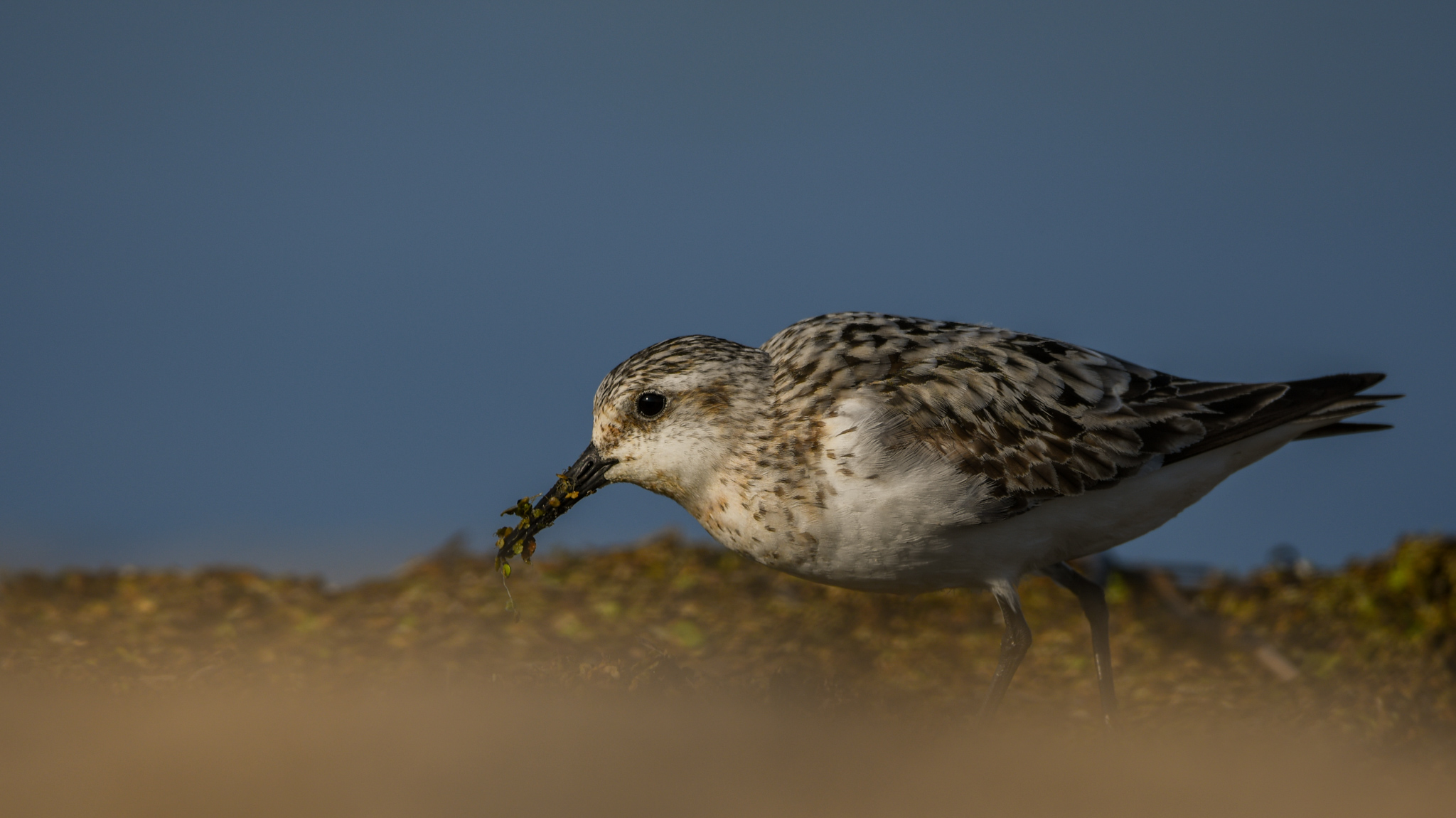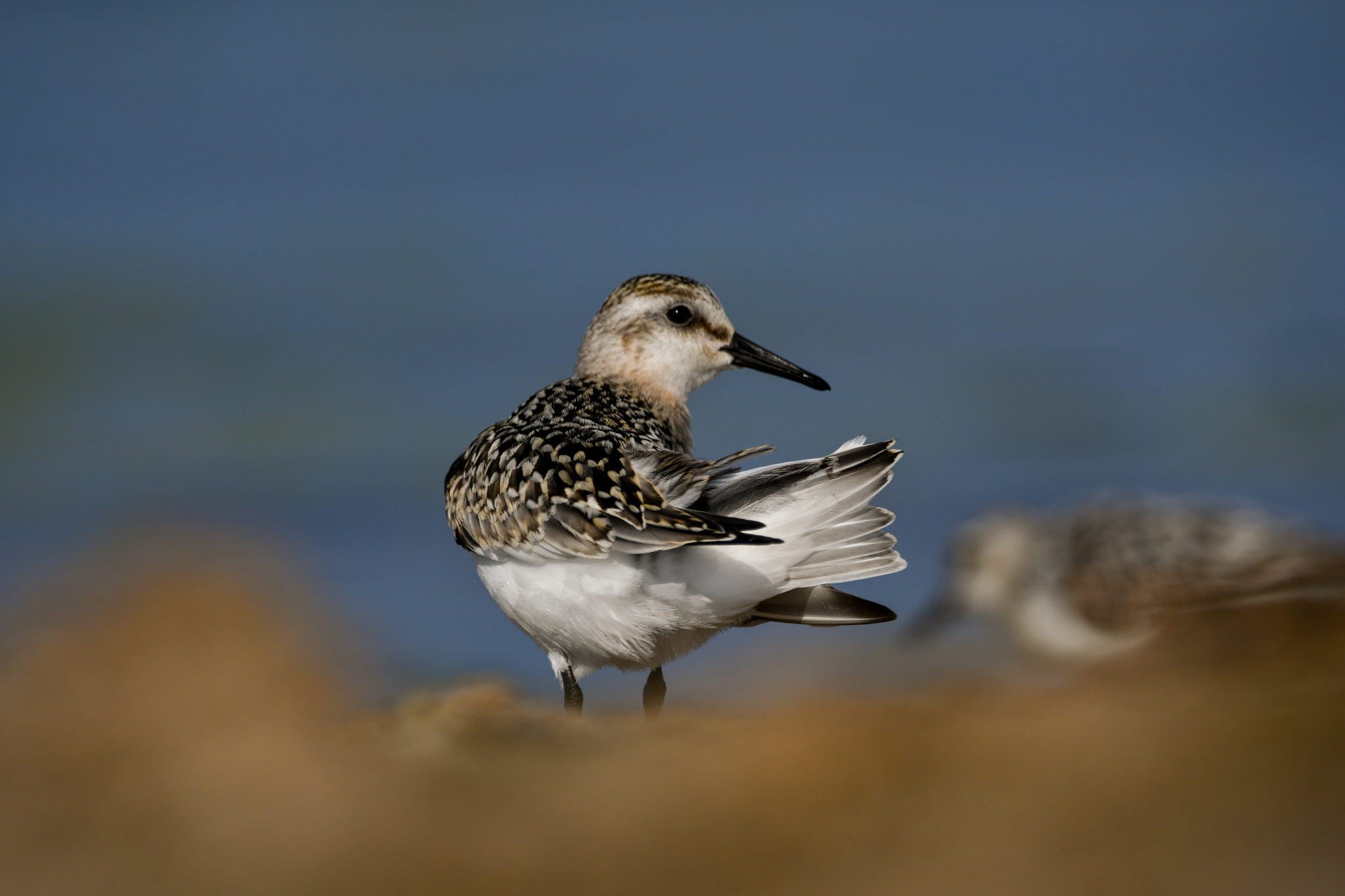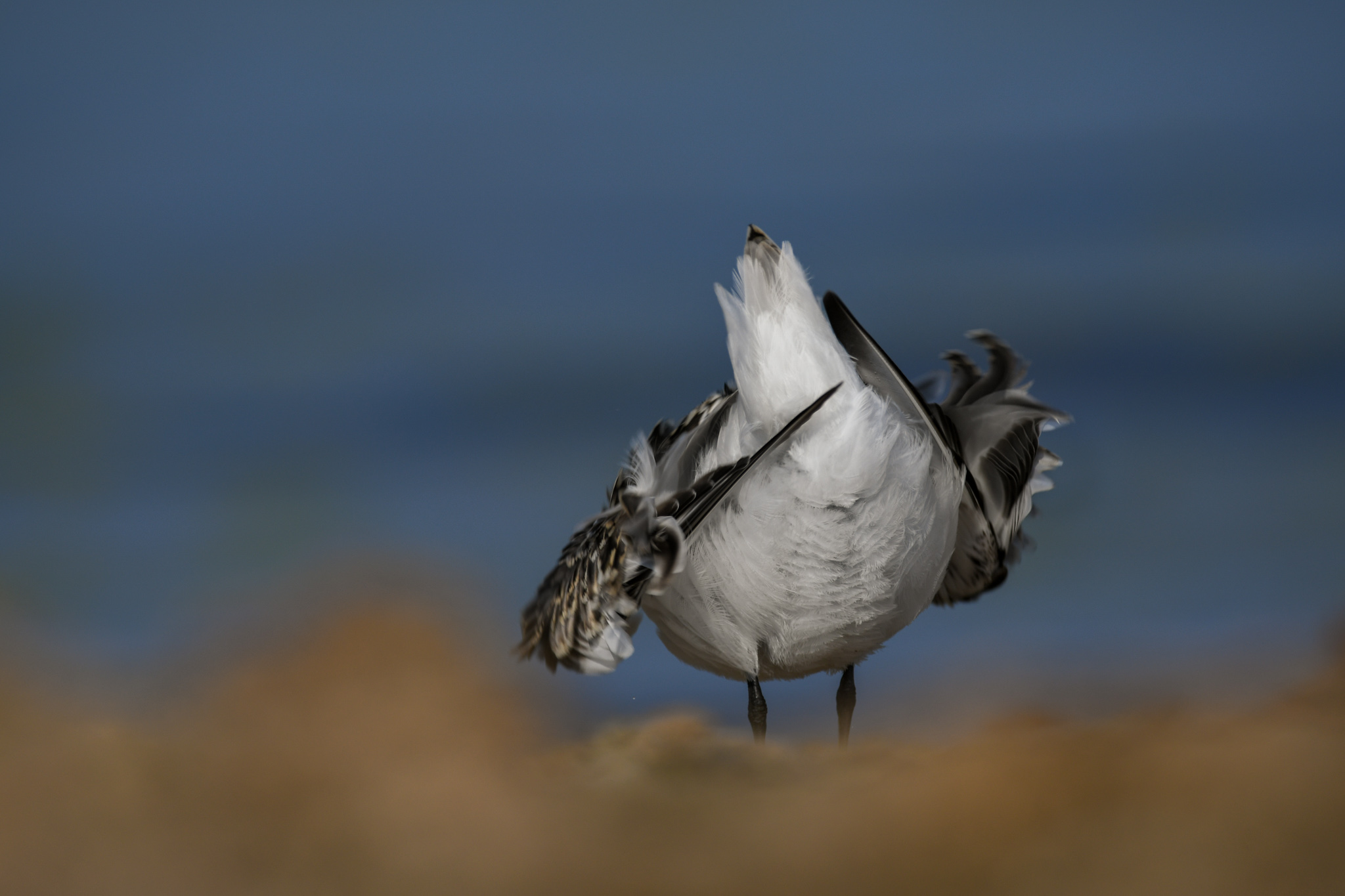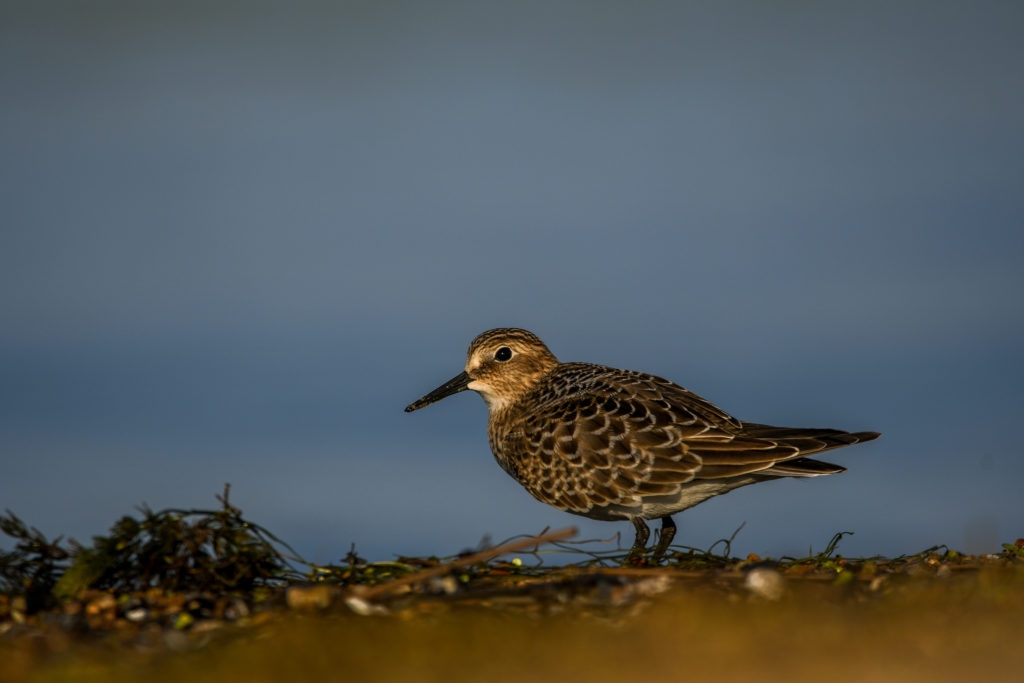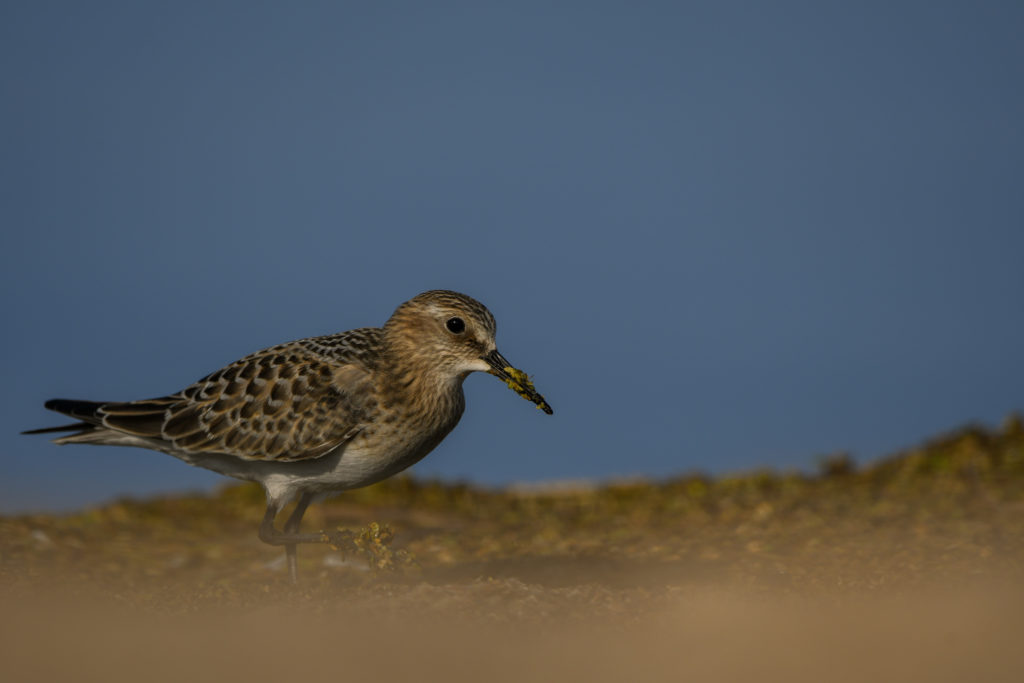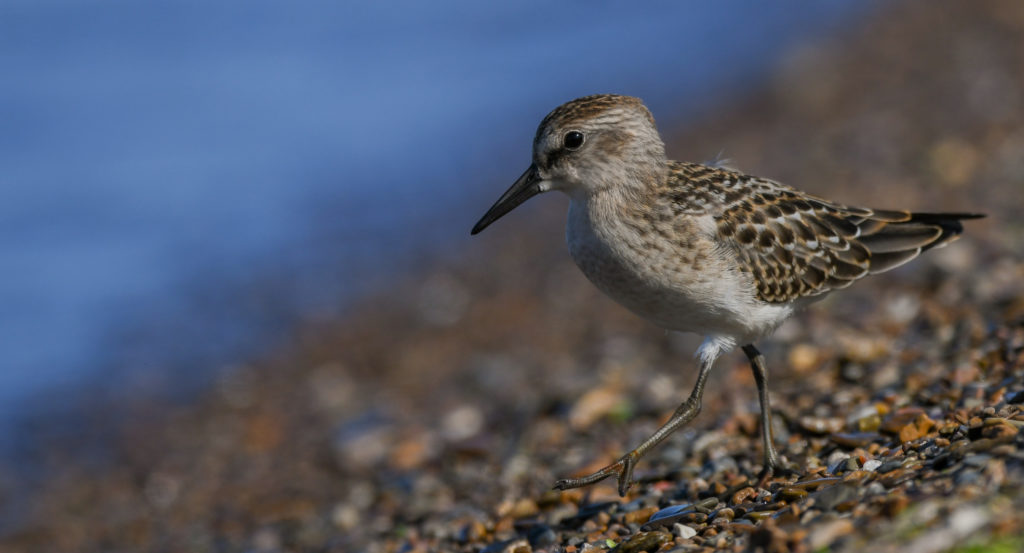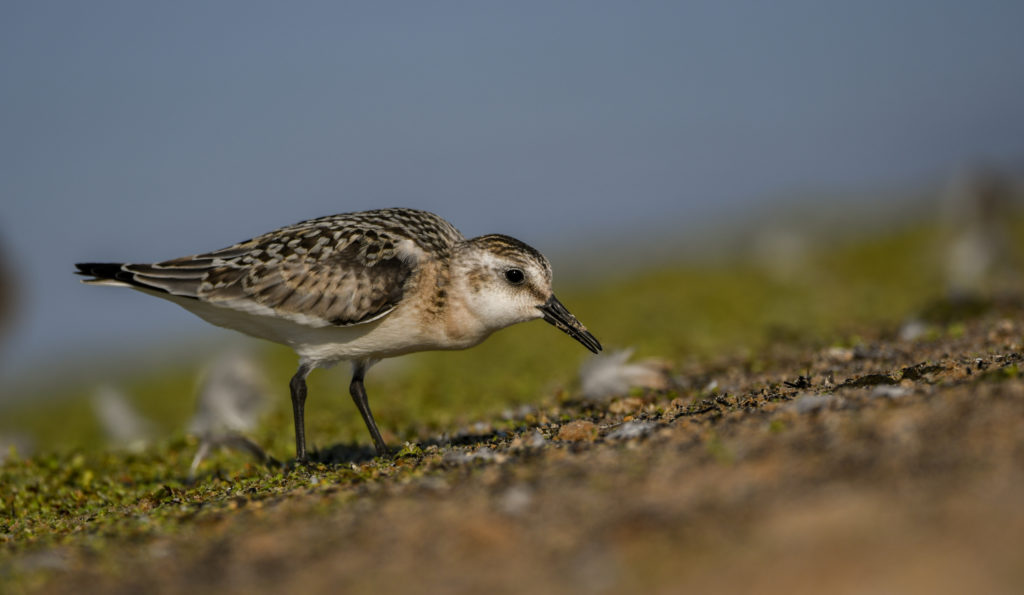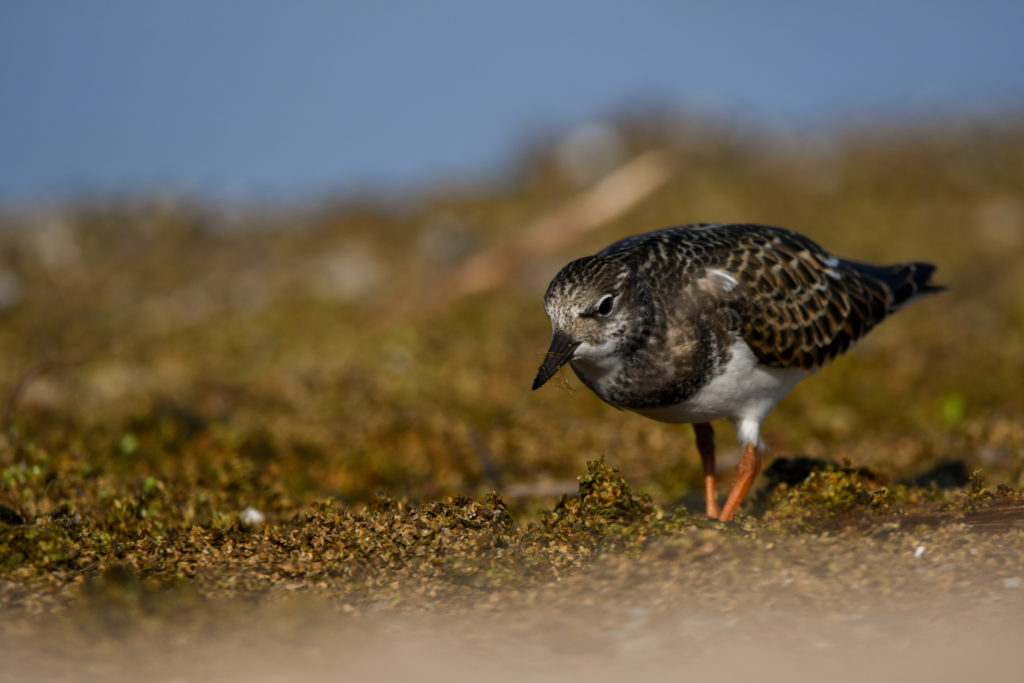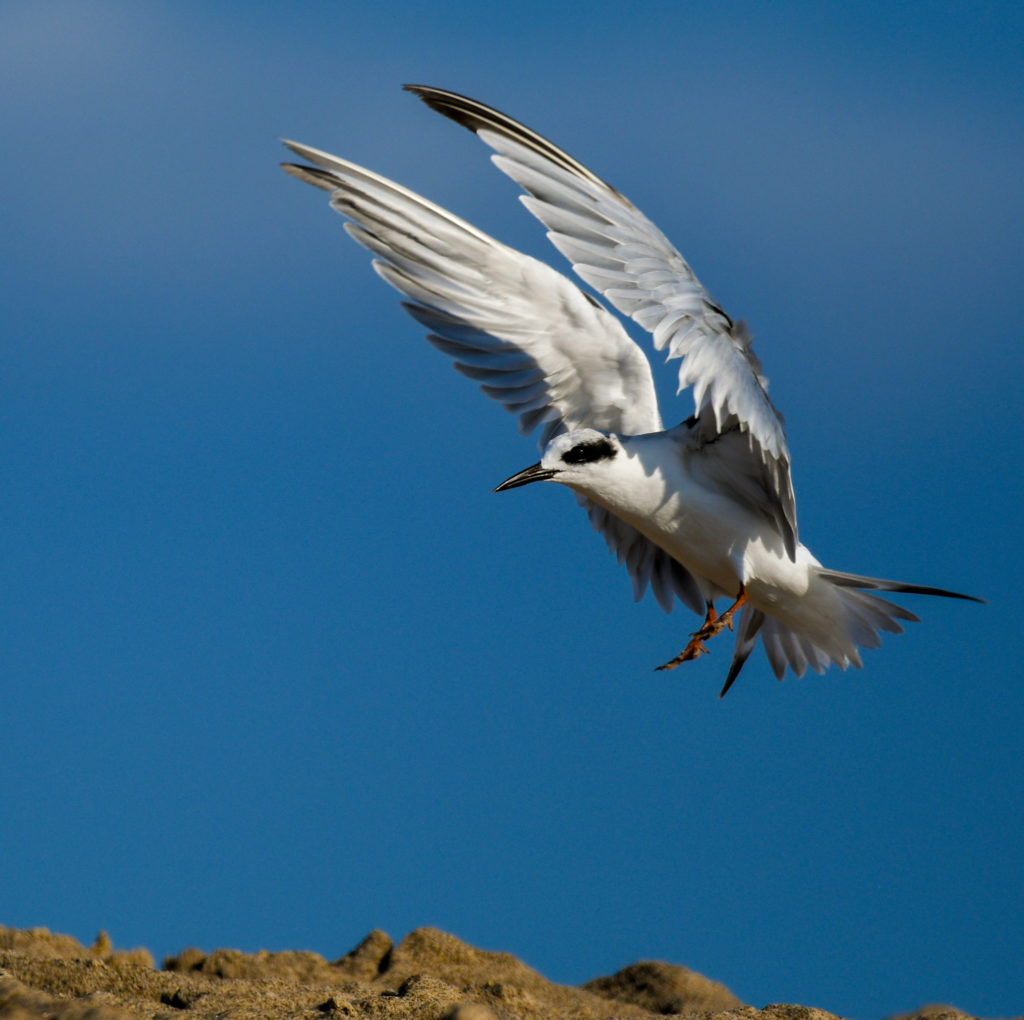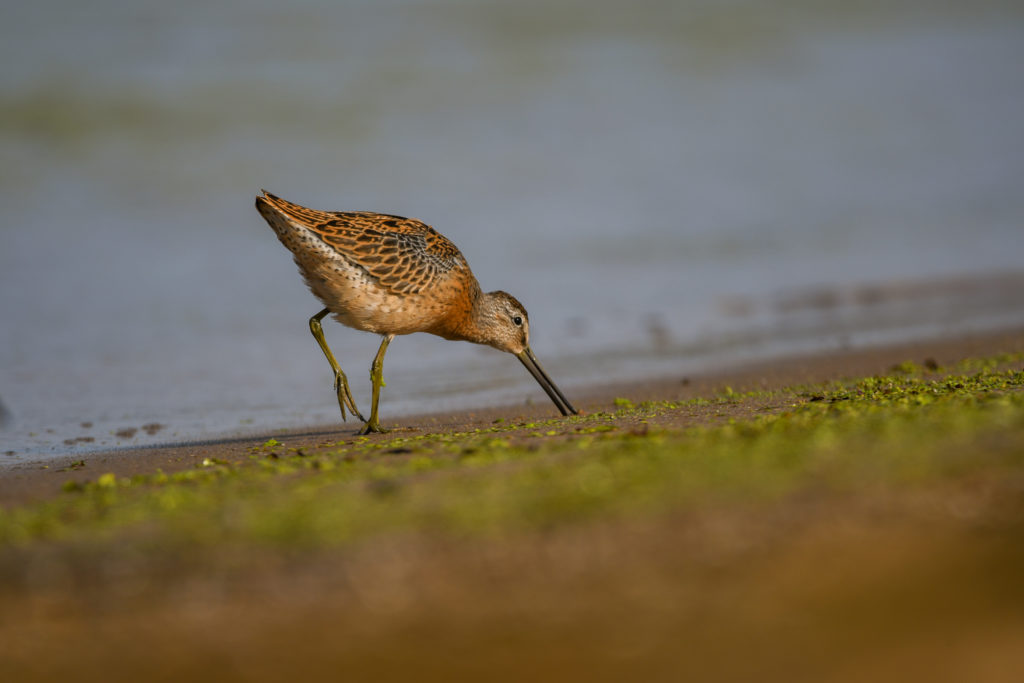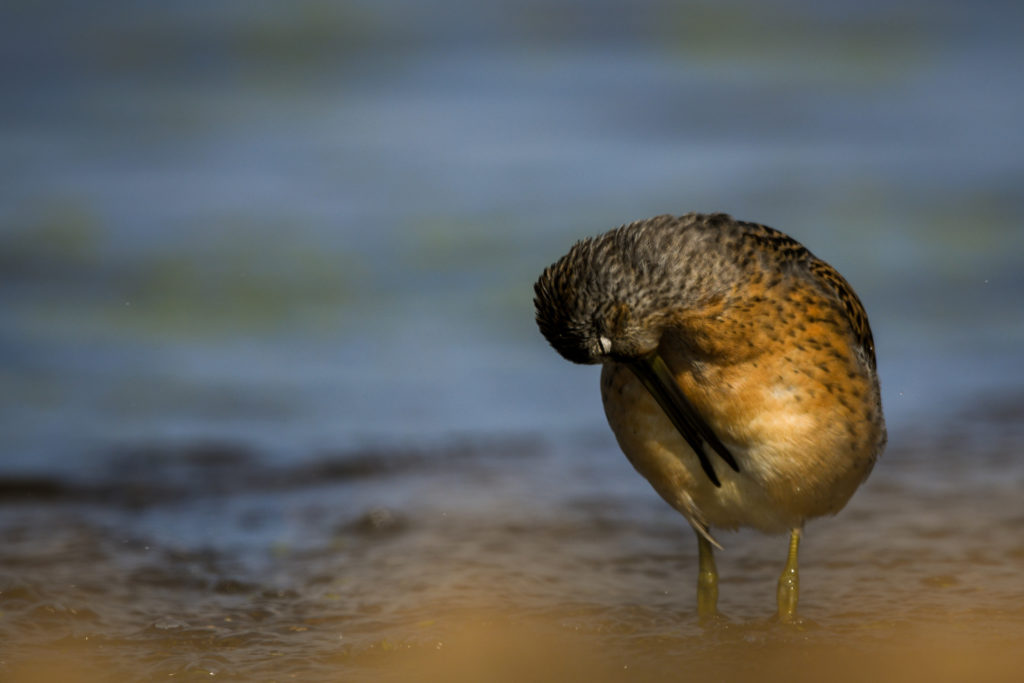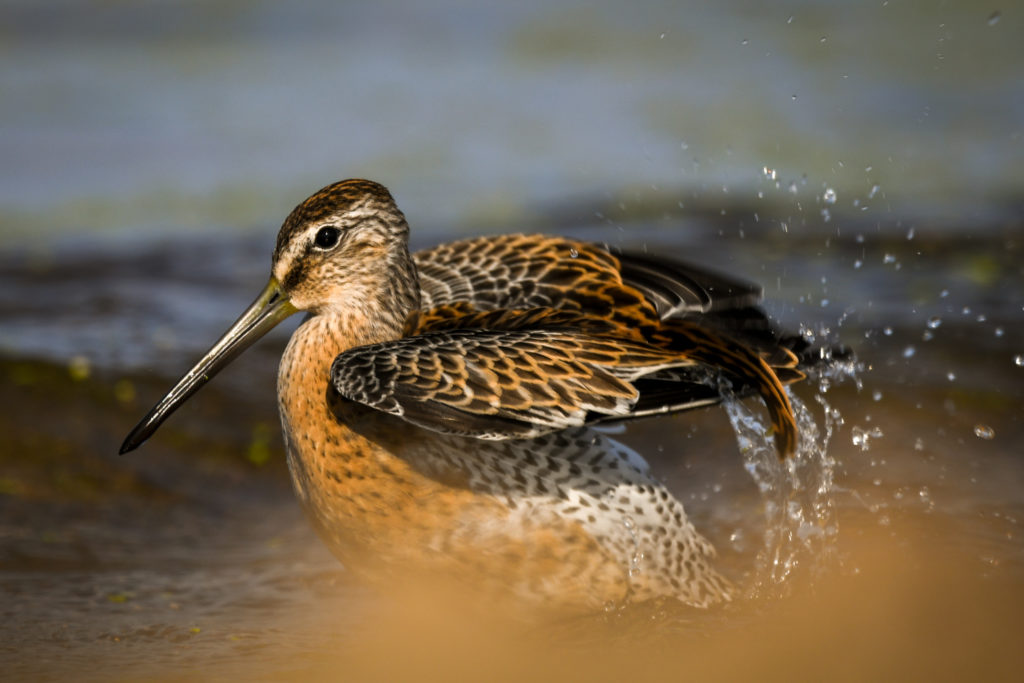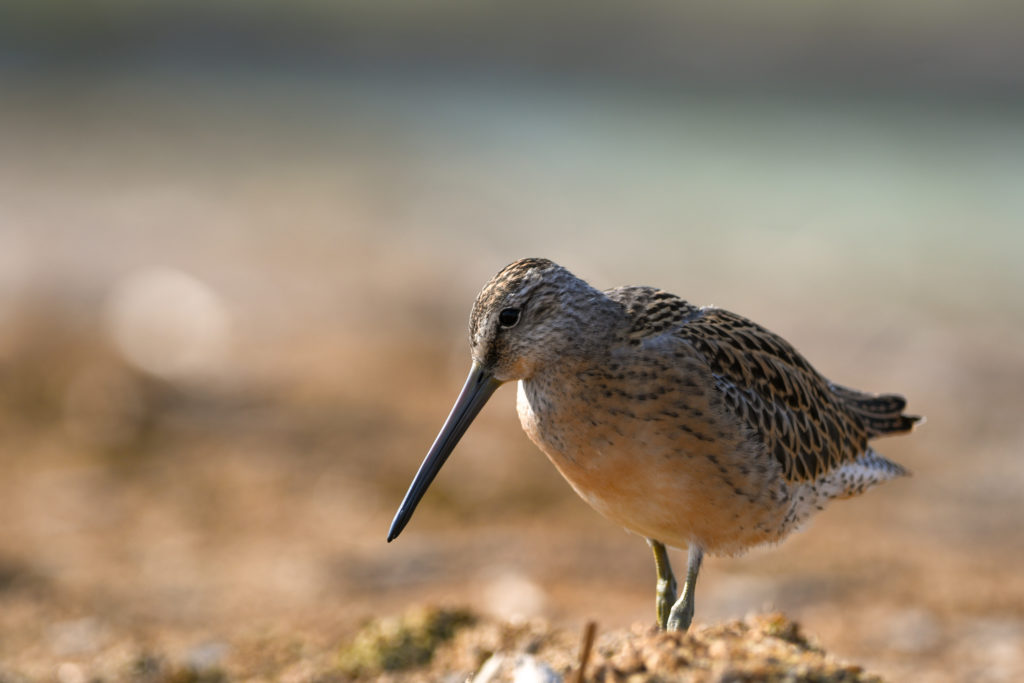Peak of Shorebird Migration – New Buffalo

Before we begin I want to announce that I have added a new feature to my blogposts. All images can be clicked on for an enlarged view while staying on the same page as the article. As I learn how to build a website on my own, new features may pop up. If I think a new feature is significant, I will let everybody know within a blogpost! I have not gone back through old posts to update this feature, but hope to do so in the coming weeks. Additionally, I apologize to anyone who may have subscribed to my blog for email alerts. That feature is currently not working correctly. I have been working on the issue, but it is not resolved yet. Let’s get to it…
If you’re looking for a great shorebird experience to hone your ID skills, or if you need a quick fix for a photo op, head over to New Buffalo Beach! In my opinion, the final weeks of August and the first weeks of September are the best time to see shorebirds in both diversity and quantity. Shorebirds seem to be attracted the the sheltered portion of the beach at New Buffalo’s harbor. Mounds of Duckweed, a small aquatic plant that can often be found covering stagnant ponds in a layer of green slime, is slowly deposited on the sandy shores whenever passing watercraft come through the channel. The Duckweed attracts invertebrates, a critical source of nutrition for shorebirds, seeking to refuel for the next leg of their journey south. Additionally, New Buffalo sits in the very extreme southwest corner of the state, towards the bottom of Lake Michigan. The south end of the lake creates a phenomenon coined “Bottom of the Lake Effect.” Migrants following the shoreline southward are funneled into a few key locations bordering the southern shores of Lake Michigan including New Buffalo.
One aspect of this beach I like in particular is the small bank on the south side of the channel. This area is not publicly accessible and provides an area for shorebirds to feed undisturbed. This means you can expect to spend more time with the birds with less of a risk of the birds vacating the area completely in search of a quieter location. Different birds may move back and forth across the channel as they seem fit, which adds an element of excitement for anyone visiting. I imagine the plethora of food hiding in the Duckweed is a bit of a motivator for a hungry sandpiper to stick around.
This past month, I’ve made two visits to New Buffalo. Both experiences were incredible, and I’ve banked over 3000 photos. I’ve been mostly working on photo composition with my Nikon D500/Sigma 150-600mm combo. I’ve brought home a lot of sand, laying prone on the beach, eye-level with the birds. I even ruined a nice pair of khaki shorts, when I army-crawled through some goose poop! If you plan on working the beach in a prone position, be sure to wear clothing you won’t mind getting dirty. Laying prone for shorebirds is going to greatly increase the “coolness” factor of your shots. Getting level with your subject creates a more captivating composition, and the viewer builds a stronger connection to the subject. Let’s be real. You want more likes and comments on social media. This will do it for you!

Prone photography takes patience. I always take time to study how the shorebirds are moving. It is important to know if they are moving towards or away from your stakeout position. I aim to choose a spot some distance away and allow them to approach me on their terms. Trying to approach a flock straight off is going to end badly. At first, expect some individuals to give you a wide berth, but if you continue to remain still, your presence will become less threatening. During my visit last weekend, I spent nearly three hours with the shorebirds. By the time I left, I was able to freely move around within the flock without any reaction from the birds. I was picking my subjects as I pleased and getting better poses.
Last weeks haul of shorebirds at New Buffalo was the most diverse I have ever experienced at that location. About a dozen Sanderlings worked the water’s edge, occasionally moving over the cresting Duckweed and into the view of my Sigma 150-600mm lens. Although several “more interesting” subjects were nearby, I couldn’t help but take a number of shots of these funny little birds. Their “cuteness” factor is through the roof. Some individuals were in wintering plumage, mostly white with mottled gray/black wing and back feathers. Others had some rusty feathers still clinging to their face and breasts.
Pretty much straight off the bat, I had a couple Semipalmated Plovers come in really close. I didn’t spend a lot of time with this species, since I had a pretty good haul of photos from a visit a couple weeks before. Still, a few photos had to taken! I also threw in a few I took a couple weeks back. The ones present last weekend appeared to be juvenile/non-breeding, whereas several adults in breeding plumage were visible a couple weekends ago.
Baird’s Sandpipers were a hot topic for the day, especially at the beginning of my visit. Preferring to stay away from the water’s edge and knee-deep in Duckweed, two individuals were almost always in full view from my position in the sand. I took a lot of shots. A pair of Least and a pair of Semipalmated Sandpipers rounded out peeps (a term commonly used for the smallest shorebird species from the genus calidris).
Picking Baird’s Sandpipers out of a flock of peeps can seem challenging for a beginner, but a couple key field-marks make a tall task a lot easier. The primaries, or outer wing feathers, extend well beyond the end of the tail giving the bird a slender, stream-lined appearance. the similar Least and Semipalmated Sandpipers wingtips may occasionally extend past the tail, but only marginally. The bill is always straight on Baird’s with Least and Semipalmated being slightly downcurved. Lastly, Baird’s have a very simple, yet elegant, scalloping back pattern of black and grays with a warm, buffy face and upper breast. You can compare photos of Least, Semipalmated and Baird’s Sandpipers below.
A Ruddy Turnstone, confirmed to be present by another birder, was absent when I arrived, but showed up shortly after I began working the peeps. I spent quite a bit of time on this one, enjoying the bird’s namesake, turning stones. It is a rather unique feeding strategy, but one that the bird is specifically designed to do. Using it’s upturned bill like a shovel, the Turnstone would flip driftwood and fling Duckweed looking for food. A drastically different approach from the probing of the peeps and the picking of the Plovers. The Ruddy Turnstone also showed me a few yoga poses, stretching it’s wings and feet. Flipping stones must be a lot of hard work!
I began working my way back toward the parking lot, stopping to get a few shots of an accommodating Semipalmated Sandpiper. I saw the peep crouch low in my viewfinder. Intuition told me it had sensed danger in the sky. Looking up, I saw an adult Bald Eagle lumbering overhead. Nearly all of the shorebirds flushed, circling the area for a few moments before settling back down. Watching the flock moving around the harbor, I noticed a Dowitcher had joined the flock. It must have been working a portion of the beach behind the south breakwall, out of view, and driven towards the harbor by the eagle.
Once settled on the beach with the other birds, I was able to identify the Dowitcher as a juvenile Short-billed. Overall, a really sharp bird with rich rufous feather edgings. Not fully acclimated to the area, the Dowitcher started off a little nervous, flushing frequently. I decided to come back later when I might be able to get some better shots.
I scanned the lake-side of the beach and found two Forster’s Terns mixed with the gulls. These terns were transitioning into non-breeding plumage, making them easy to ID. In Spring, both Common and Forster’s Terns look similar, and it takes careful examination to tell the two apart. Forster’s Terns loose their dark caps earlier than Common and develop a dark patch around the eye that Common’s do not get in winter.
Back on harbor-side, the Short-billed Dowitcher (SBDO) put on a bit of show, bathing in the calm, warm harbor water. By now, the shorebirds were so accustomed to my presence, they were sometimes moving within 5 feet of me. My lens’ minimum focal distance is 110″ so I had to just set my camera down, and enjoy naked-eye views. Pushing 3000 shutter clicks on the day, I finally decided to call it quits. The sun was in a higher position, causing harsh lighting and I knew I had a monster task of selecting and editing photos to look forward to.
I’m ready to get out there again. As we move into September, I am going to have to balance my shorebird time on the beach with time spent in wooded areas and wetlands chasing fall songbirds. I have not spent a lot of time with small birds, and that is the next step I need to take with my new camera and lens. I’ll leave you with a “bonus” shot of an adult Ruddy Turnstone in flight.
Until next time! Thanks for reading. Up next is a blogpost called “County Birding – a Niche Worth Exploring.” Stay tuned.



